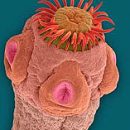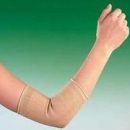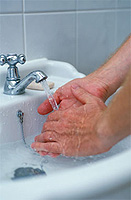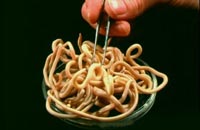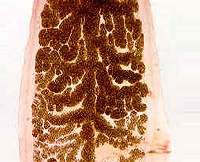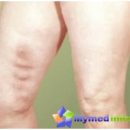All young parents are known that the 6-7-month baby cannot be held in the crib or Manege: he rushes on the will to learn everything around. And since the acquaintance of a child with interesting items usually occurs through the mouth, it is at that time a risk appears that, together with toys, the eggs of worms and other parasites will fall inside.
Content
With age, the baby becomes more and more active, gets to any places in an apartment or house, which increases the risk of problems. At the age of 1.5-3 years, the probability of infection with parasites reaches almost 100%! By the way, that is why diseases caused by worms are considered one of the most common in the world.
Slovered portrait
Glisters (academic helminths) are called parasitic worms and their larvae. The number of species that can be in the human body is quite large, but fortunately, most of them are very rare. In the European part of Russia, the so-called intestinal nematodes or round worms (Askarida, Ostrida), which live in the intestine. It is less likely to have parasites living outside the intestine or in its wall (AnkiloStom, Bellor, Trichinella, intestinal controversy). Quitely rarely - Soskers (trematodes) and tape helmintes (cueskends): They are threatened only by those children who eat raw or poorly roasted / coarse meat or fish, unwashed vegetables and fruits, drink water from rivers and other reservoirs. Since in 90% of cases in children there are ascaridosis and enterobiasis (disease caused by the edge), we will focus on them.
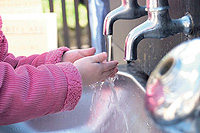 Ascarides - round worms of white, pink or beige color, translucent, length from a few millimeters to 30-40 centimeters. This kind of worms are mainly in the small intestine, does not attach it to its wall and constantly performs movement towards the opposite direction of food. That is why to detect Ascarud in Kale is quite difficult. From time to time in the contents of pots, microscopic eggs of worms, which are not visible to the naked eye. Without the treatment of ascaris can live in the intestine for several years.
Ascarides - round worms of white, pink or beige color, translucent, length from a few millimeters to 30-40 centimeters. This kind of worms are mainly in the small intestine, does not attach it to its wall and constantly performs movement towards the opposite direction of food. That is why to detect Ascarud in Kale is quite difficult. From time to time in the contents of pots, microscopic eggs of worms, which are not visible to the naked eye. Without the treatment of ascaris can live in the intestine for several years.
Molds are small, up to 1 cm long, often curved parasites whitewastered. They live in the lower departments of the thin and large intestine, so they are more often than Askarid, detect in Calais. At night, the molds are chosen on the skin, in the folds of which eggs are laying. In girls, they can drive into the external genitals, irritating and infecting the mucous membranes by bacteria, the simplest, mushrooms, that is, with all the fact that parasites bring with them from the intestine. The life of the cork is about 1.5 months, but due to the huge number of laid eggs, their number is constantly growing, and the disease without treatment can last for years.
Where do worms come from? Eggs or larvae of microscopic particles fall into the child's body, very resistant to the environmental impact: it is known that those and others can wait a long time to wait in the hour, being in the ground, on the surface of objects or products, in the folds of linen, on the skin, under nails. When the eggs of worms penetrate into the mouth, they with some losses pass through the acidic, aggressive stomach medium and are activated in the intestine, where there are all the conditions for their development.
Very small children are more often infected with worms, because they have yet poorly developed protective barriers of the gastrointestinal tract. In addition, due to their age, they do not always comply with the rules of hygiene.
Dangerous Path
Whatever it is surprising, the baby can get to get worm at home, in a clinic or kindergarten, because in all rooms there is something that serves as an excellent refuge for parasites: Street shoes, not perfectly clean floor in the hallway, toys, public seats. «Acquaintance» With worms often occur on the street, if the child raises curious items from the ground, playing in the sandbox. Danger is animals, especially stray, or homemade, extinguishing on the street. Parasites Eggs are insects - flies, cockroaches, ants. Besides, «bombs» Slow action can be in dust, on vegetables, fruits, greenery and in water. The risk of the appearance of worms, if adults and children do not comply with all the rules of hygiene: do not wash hands with soap, eat dirty vegetables or fruits, drink raw water from rivers and other reservoirs.
What are dangerous worms?
- They are the cause of any disorders of the gastrointestinal tract: constipation, diarrhea, stomach pain, liver problems or pancreas.
- Because of them, the child can begin allergies, weaken immunity, signs of intoxication (poisoning) of the body appear: so, due to the disorder of the nervous system, the child begins to creak his teeth, it appears cramps.
- The worms can aggravate health problems that have arisen before they appear (for example, strengthening atopic dermatitis), as well as serve as a starting point of hereditary diseases.
Clear thing that the thing is dark...
How to understand that a child has worms? It happens that mom, considering the contents of the pot, detects living or stationary parasites (most often the berth). In addition, the eggs Askarid can be detected in feces or identify enterobiosis, making a special study - scraping. But most often about the emergence of problems have to guess in indirect signs.
- The kid has a lot of saliva, he gives food (or sick of him), does not want to eat or, on the contrary, constantly asks additives. Sometimes the child complains of pain around the navel or cannot specify exactly in which part of the abdomen it arises, he periodically or constantly frustrated (diarrhea or constipation). In addition, the baby quickly gets tired, he often hurts or spins his head, his face pale, and under the eyes there are blue circles. All these symptoms speak of the body poisoning.
- Some analyzes also indirectly confirm the presence of worms: non-surprising intestinal dysbacteriosis, low hemoglobin, a large amount of blood eosinophils (standard up to 5%), an increased EFA indicator in the general blood test.
- If the worms caused the appearance of allergies, skin manifestations (for example, atopic dermatitis) come to the fore, which, as a rule, are not very well treated. By the way, if an older child suddenly appears allergies, most likely, worms have wound up.
- As for enterobiosis, discomfort in the field of rear pass and outdoor genital organs and all related problems are especially characteristic of. Because of «Expansion» In the evening, the child becomes too excitable, capricious, poorly falls asleep, I can not find the places for a long time, turns. At night, he screams, awakens, it strives, grinds his teeth (if these symptoms are not characteristic of daytime sleep and happen every 10-15 days, it is likely to talk about enterobiosis with a high probability). Plus, the kid can complain to itching in the crotch area, which often manifests itself too much interest in a very small child to this part of the body, redness in the area of the rear pass. And, as mentioned above, girls enterobiosis may be accompanied by inflammation of external genital organs.
Difference difficulties
Repeat: to detect worms difficult. Especially if for these purposes to assign a single analysis to a child.
After all, in order to find in the feces of the eggs of parasites, you need to coincide several conditions at once:
- The worms at this point must postpone the eggs (the interval between the eggs can reach from 3-5 days to 2 weeks);
- It is necessary to explore exactly the plot of Kala, where there are larvae;
- Eggs of worms still need to see: alas, the clinics usually recognize ascarides and another 2-3 types of helminths, while in the middle lane there are no less than 20.
As for the analyzes that have recently appeared on the definition of antibodies to parasites in the blood, they are also not absolutely reliable. It is believed that only 1 out of 100 cases of glisten is detected by diagnostics.
There is an exit!
«What to do? - you ask. - Does the doctors have no ways to deal with parasites?» Of course, there is: in our time there are safe anti-zhilants that kill helminths and do not affect the human body. That is why doctors often prescribe children drugs from worms after it is found not direct evidence, but indirect signs of illness. By the way, on the recommendations of the World Health Organization (WHO) all parents twice a year (in spring and late autumn) should conduct preventive treatment of children from 1.5 to 7 years, even if they have no complaints and symptoms of the disease. If any signs of the appearance of parasites still attract your attention, you must refer to the doctor: it happens that they indicate not only for the presence of helminths, but also on other malaise. In the case of the detection of worms, it is not necessary to deal with self-medication: antickels selected without consulting a doctor may be ineffective.
Is it confidently to say that drugs against worms are safe? Yes, if the patient complies with the prescribed dosage physician, which, by the way, do not always comply with the instructions of the instruction (for example, they are more than recommended for non-drugs). However, in response to reception, side effects associated with the destruction of parasites may occur. It is about diarrhea, a small stomach pain, sometimes vomiting, rise of temperature, unpleasant sensations in the mouth. However, it is very easy to get rid of these misfortunes: it's enough to give a child activated carbon or lactiform.
There is a list of safe anthecked drugs compiled by WHO specialists. It includes four drugs that are prescribed and the small Russians: Levamizol, Nebekol, Pyrantel, Albendazole. Specialists have proven that the best results can be achieved with the help of integrated courses consisting of two or three drugs.
In some cases, after the detection of worms in a child or from someone from family members (especially if it is an edge or dwarf chain), you need to treat the whole family if possible. In addition, you will need to boil and try bid and private underwear on both sides. If the child was found ascaridosis, such measures are not required.
Hold the course

